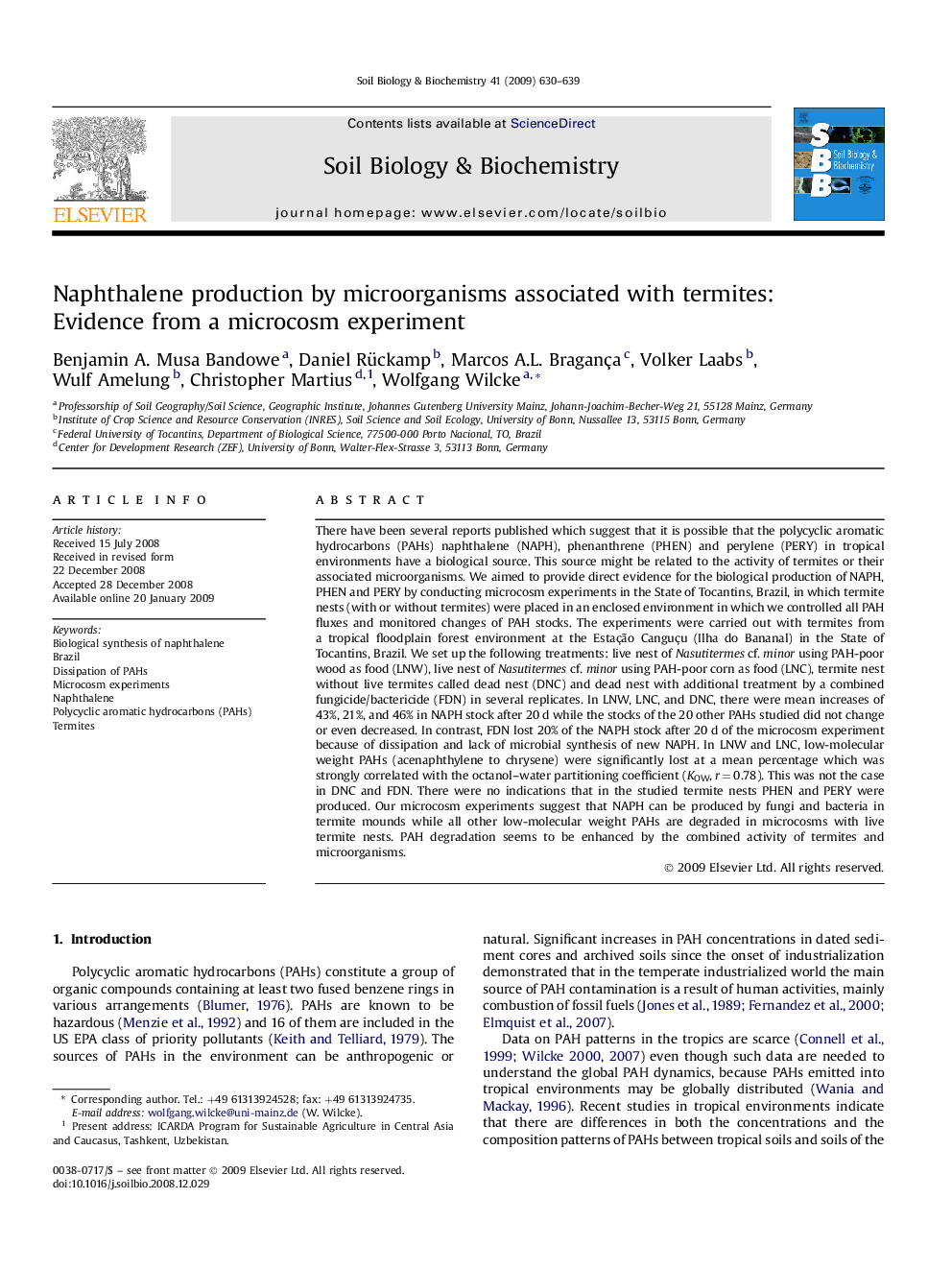| کد مقاله | کد نشریه | سال انتشار | مقاله انگلیسی | نسخه تمام متن |
|---|---|---|---|---|
| 2026735 | 1070039 | 2009 | 10 صفحه PDF | دانلود رایگان |

There have been several reports published which suggest that it is possible that the polycyclic aromatic hydrocarbons (PAHs) naphthalene (NAPH), phenanthrene (PHEN) and perylene (PERY) in tropical environments have a biological source. This source might be related to the activity of termites or their associated microorganisms. We aimed to provide direct evidence for the biological production of NAPH, PHEN and PERY by conducting microcosm experiments in the State of Tocantins, Brazil, in which termite nests (with or without termites) were placed in an enclosed environment in which we controlled all PAH fluxes and monitored changes of PAH stocks. The experiments were carried out with termites from a tropical floodplain forest environment at the Estação Canguçu (Ilha do Bananal) in the State of Tocantins, Brazil. We set up the following treatments: live nest of Nasutitermes cf. minor using PAH-poor wood as food (LNW), live nest of Nasutitermes cf. minor using PAH-poor corn as food (LNC), termite nest without live termites called dead nest (DNC) and dead nest with additional treatment by a combined fungicide/bactericide (FDN) in several replicates. In LNW, LNC, and DNC, there were mean increases of 43%, 21%, and 46% in NAPH stock after 20 d while the stocks of the 20 other PAHs studied did not change or even decreased. In contrast, FDN lost 20% of the NAPH stock after 20 d of the microcosm experiment because of dissipation and lack of microbial synthesis of new NAPH. In LNW and LNC, low-molecular weight PAHs (acenaphthylene to chrysene) were significantly lost at a mean percentage which was strongly correlated with the octanol–water partitioning coefficient (KOW, r = 0.78). This was not the case in DNC and FDN. There were no indications that in the studied termite nests PHEN and PERY were produced. Our microcosm experiments suggest that NAPH can be produced by fungi and bacteria in termite mounds while all other low-molecular weight PAHs are degraded in microcosms with live termite nests. PAH degradation seems to be enhanced by the combined activity of termites and microorganisms.
Journal: Soil Biology and Biochemistry - Volume 41, Issue 3, March 2009, Pages 630–639